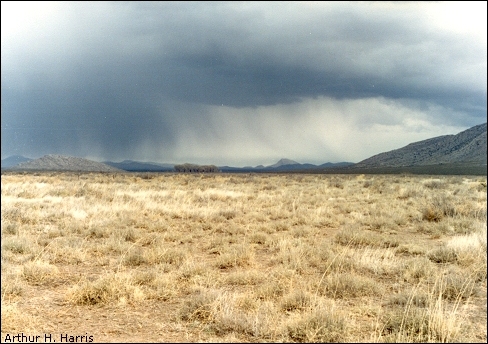

When we think of rain, it's usually that of our wet season, the monsoonal rains of July, August, and September. After all, the northern Chihuahuan Desert receives half or more of its annual precipitation during this 3-month period. There's a problem with summer precipitation, though. With individual thunderstorm cells limited in extent, one area may get an inch of rain while a place a few miles away gets nothing from the storm but wind. Moreover, the topography tends to play a large role in who gets water and who gets dust. In El Paso, neighborhoods near the Franklin Mountains may receive more than double the amount of precipitation recorded at the official weather station at the El Paso Airport.
On the other hand, winter precipitation tends to be more dependable and
evenly spread. Indeed, climate-wise, the Sonoran and Chihuahuan deserts, along with our
immediate neighbors to the north, are tied together by our shared patterns of winter
rain and snowfall--precipitation more predictable for our arid-land plants and animals
than summer's often empty promises.

Contributor: Arthur H. Harris, Laboratory for Environmental Biology, Centennial Museum, University of Texas at El Paso.
Desert Diary is a joint production of the Centennial Museum and KTEP National Public Radio at the University of Texas at El Paso.
<<img class="rule" src="ruleahh.gif" width="95%" height="2" alt="rule" />
Early winter rain season in the bootheel of southwestern New Mexico. Photograph by A. H. Harris.